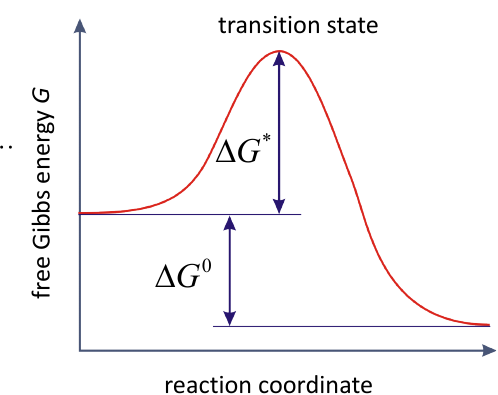I've been researching this question for a while now and here is my crack at it:
So, ATP does actually break down on its own. It takes a few hours for all of it to break down, but we can see it in dead bodies when the muscles get stiff, aka rigor mortis. After 6-8 hours, the ATP has disassociated naturally into ADP+PO4 and the muscles no longer relax, giving the dead body rigor. So I think an interesting question is why doesn't a dead body naturally contract all its muscles during this disassociation? A dead body usually just lays relaxed, so this ATP is attached to the muscles and we know it is because the limbs are floppy floppy so the muscles must be disengaged aka ATP bound.
But this is not what we predict with ATP hydrolysis as fuel model; the muscles do not move because of the natural disassociation of ATP, they do not contract and relax as the muscle would "use its fuel" over said 6-8 hours. As measured by physiologists, the muscles only have about 2-4 seconds of ATP in the active environment, the rest has to be restored across four different ATP manufacturing processes that use different resources in the muscle cell, but that is getting one step above this question. The point is that an active muscle will use ATP stores in ~5 seconds but a dead muscle will use ATP stores over the course of 6-8 hours.
These muscle ATPace enzymes (myoATPace; named here to distinguish from other ATPace's) speeds up this reaction, as all good enzymes do, but a dead body does not lose its myoATPace on death, so why doesn't the muscle contract at random intervals during this environment prime for spontaneous ATP disassociation? Perhaps this is controlled by the lack of neural impulse, the lack of sarcoplasmic reticulum activation, the lack of calcium release, and the lack of a binding site from the rotation of tropomyosin.
However, in controlled in vitro environments where only the actin, myosin, and the myoATPace exist, scientists were not able to active the binding with ATP unless this myoATPace was present to do the disassociation via hydrolysis. Moreover, this has always bothered me: hydrolysis is performed pre-recovery stroke, not during the boom boom power stroke. So what the hell, how does it transfer the energy across multiple phases of mechanical action just to reach the actin and then have enough energy to push the body? I don't think it does.
One other point: scientists have also been able to reverse the lever arm of a myosin after it performed the power stroke, effectively demonstrating a reverse mechanical action with the re-introduction of ADP after its ejection.
What if the muscle and ATP hydrolysis are not analogous to a combustion engine? What if instead the energy we get is not from the creation of energy with the byproducts of ADP and PO4, but from the creation and specific binding sites of ADP and PO4 altering the molecular environment of the myosin head? The alteration of structure from the generation and the specific reattachment sites of the ADP and PO4 supported by myoATPace on the myosin promote the necessary environment to essentially activate an electrochemical Rube Goldberg machine. This machine would be based off of quantum electromagnetic forces produced (i.e. electron driven machine) as opposed to the caloric forces from hydrolysis (i.e. heat-driven machine).
Structural changes to the electromagnetic environment would explain how the lever arm is reversable, as this is not explained by the ATP-hydrolysis theory (aka caloric interdependent theory), because there was no hydrolysis or great breaking of chemical bonds to produce action, only the reintroduction of an electronegative (aka electromagnetic) unit to an essentially magnetic machine (affinity binding and action).
And when we really get to the weeds, all heat is electromagnetic action anyways, either by radiation of EM waves or increasing electron orbital activity. I think when we stop at heat to explain this action and don't go beyond and into electromagnetism, we lose the beauty of connection from the last 100 years of quantum theory to ourselves and our physical nature. When we go into the fundamentals of chemical, atomic, and sub-atomic (aka quantum) action, we see a different reality beyond this simple combustion engine metaphor; we see how we connect to the forces of the universe itself.

